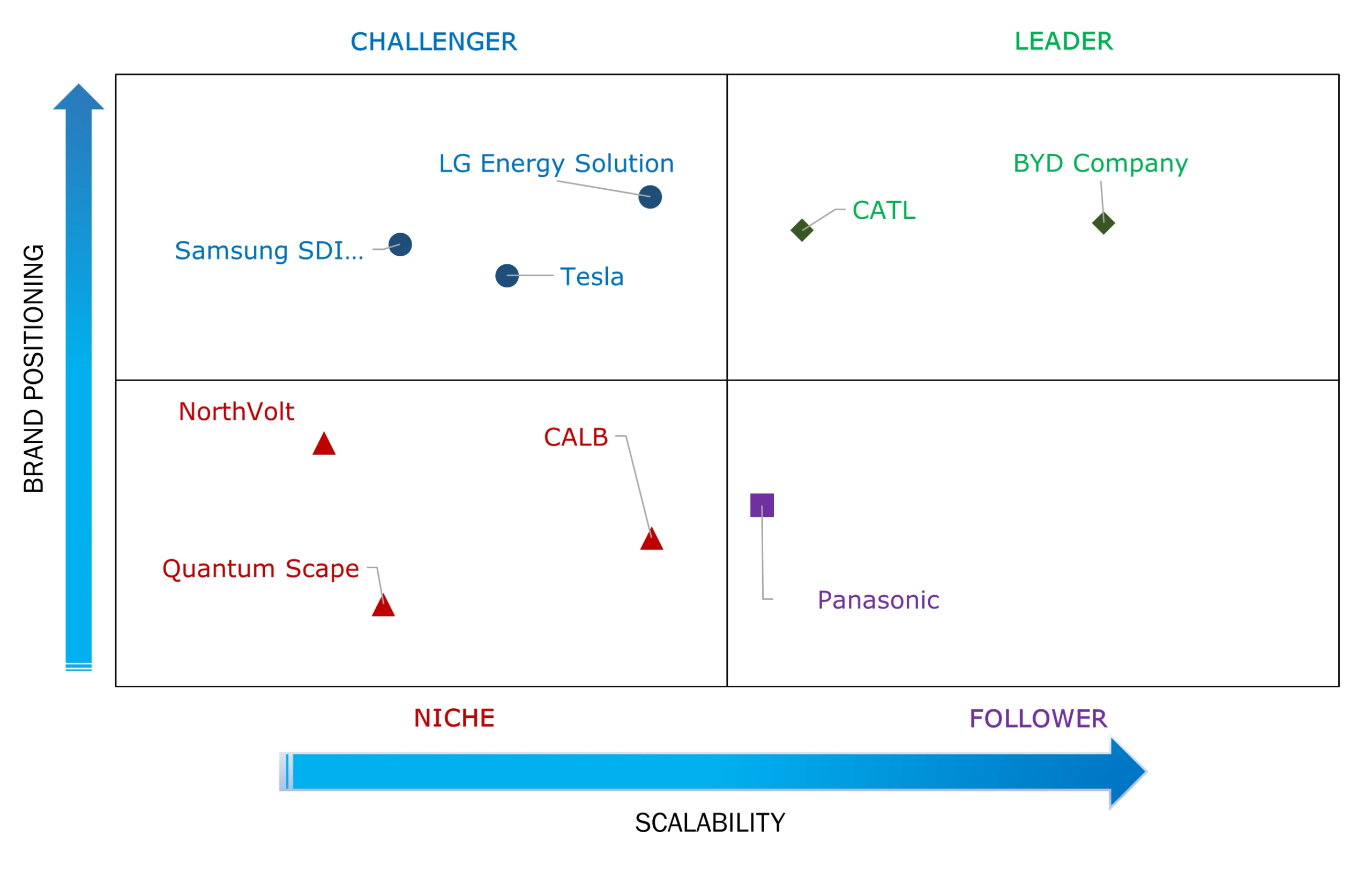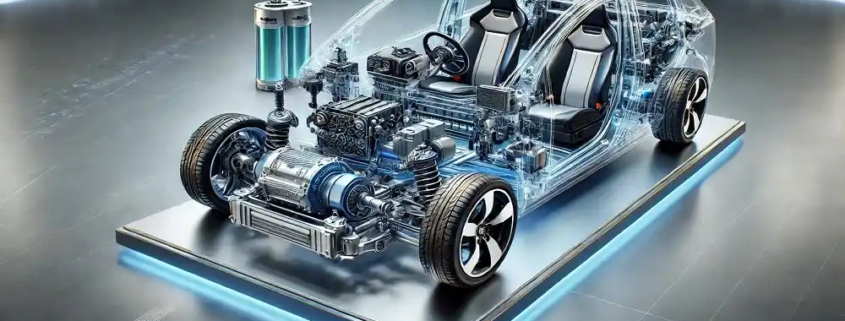BYD Company and CATL are the leaders in Electric Vehicle Battery Market as per the Knowledge Sourcing Intelligence
Competitive Benchmarking
Leaders:
- Contemporary Amperex Technology Co. Ltd. (CATL) stands out as the market leader due to its robust capabilities in research and development (R&D), manufacturing, and well-established global sales channel of lithium-ion batteries. CATL’s products are widely used in electric vehicles, including battery electric vehicles (BEVs), plug-in hybrid electric vehicles (PHEVs), hybrid electric vehicles (HEVs), and micro-hybrid passenger vehicles for both personal and commercial applications. The company’s commitment to innovation is underscored by its significant investments in R&D. CATL’s dedication to advancing battery technology further exemplifies its establishment of the National Engineering Research Center for Electrochemical Energy Storage Technology and the Key Laboratory of Li-ion Battery Enterprises in Fujian Province, reinforcing its leadership position in the rapidly evolving EV battery market.
- BYD company merges as the prominent leader in the EV battery market alongside CATL. It is the world’s leading producer of rechargeable, NiMH, Lithium-ion, and NCM batteries, and the comprehensive product range caters to various application industries such as passenger vehicles, commercial vehicles, and micro-hybrid vehicles which is leveraging its market dominance. Its continued investment in technological innovation coupled with efforts to expand its overseas market has made it stand out in the EV battery market. It has presence in more than 40 locations and 30 industrial parks, and the company dominates in markets including China, and Europe.
KSI VP Matrix

Knowledge Sourcing Intelligence Vendor Positioning Matrix
| Particulars | Ability To Improve Market Position | Resilience |
| Leader | Medium | High |
| Follower | High | High |
| Challenger | Medium | Medium |
| Niche | Low | Low |
Follower:
- Panasonic has established itself as a key player in the EV battery market, and it offers an extensive portfolio of battery solutions for the EVs including Lithium-ion batteries for hybrid, plug-in hybrid and full-electric vehicles and Nickel-Metal Hydride for HEVs. Thus, the company capitalizes on its expertise in these two batteries technology, and has steadily grown its presence in the market via offering cost-effective and reliable battery solutions. It is expanding its production capacity in regions like Asia such as Japan and North America to cater to both emerging and established markets, which is driving its revenue. For instance, it has supplied batteries for 3 million EVs in North America as of December 2023.
Challenger:
- LG Energy Solutions is leveraging its global manufacturing presence and strategic partnership to expand its market share in the EV battery market. It is a resilient competitor and has positioned itself as a formidable challenger. Its diverse product range for catering BEVs, PHEVs, HEVs and μ-HEV coupled with its growing emphasis on prioritizes sustainability across its production process is leveraging its market position. It is also leveraging its market presence by expanding its operations across North America, and Europe like Germany, Poland and Asia to capture a more high-growth market. Also, it is focusing on growing its collaboration to reinforce its competitive position. For instance, in July 2024, it collaborated with Ampere of Renault Group to supply LFP pouch-type EV batteries.
- Tesla is known for advancing EV battery technologies, providing cutting-edge solutions for its electric vehicles. The company designed a key innovation in battery cells for the EV battery in the year 2020 by unveiling the 4680-battery cell which underwent innovation in early 2024 by a significant change in its chemical composition which is believed to boost the energy transition density by 10-20% compared to the original 4680 cells. Capacity expansion of major gigafactories such as its Nevada Gigafactory which has manufactured nearly 7.3 billion battery cells, and other establishments like Fremont factory which makes 4680 battery cells, and Texas one which makes 4680 cylindrical Li-Iona is driving Tesla’s market name. As per the International Energy Agency Report on Global EV Outlook, the company accounted for 15% share in the LFP batteries and its share has increased from 20% in 2021 to 30% in 2022, reflecting robust market expansion.
- Samsung SDI Co. Ltd. has emerged as a key market challenger, as it offers lithium-ion batteries, PRIMX, for the EV market in cylindrical and pouch forms. The company prioritizes collaboration with leading market players to drive research and development initiatives to leverage its market position. For instance, in August 2024, Samsung SDI formed a collaboration with GM which involved investments of $3.5 billion to build a new battery cell manufacturing plant with an annual production capacity of 27GWh, producing NCA-based high-performance nickel-rich prismatic batteries. In March 2023, it completed a 6,500-sized all-solid-state battery pilot line at the SDI R&D Center, to cater to the recent growth in cylindrical battery demand. It is also leveraging on market presence by entering into new markets such as tapping the American market by partnering with General Motors.
Niche:
QuantumScape Corporation, Northvolt, and CALB are considered niche players owing to their low geographic presence. However, companies like QuantumScape is increasingly focused on upgrading its technology to offer more enhanced batteries to the energy storage sector. For instance, as of 2022, QuantumScape has invested $500+ million in battery technology research and development.



